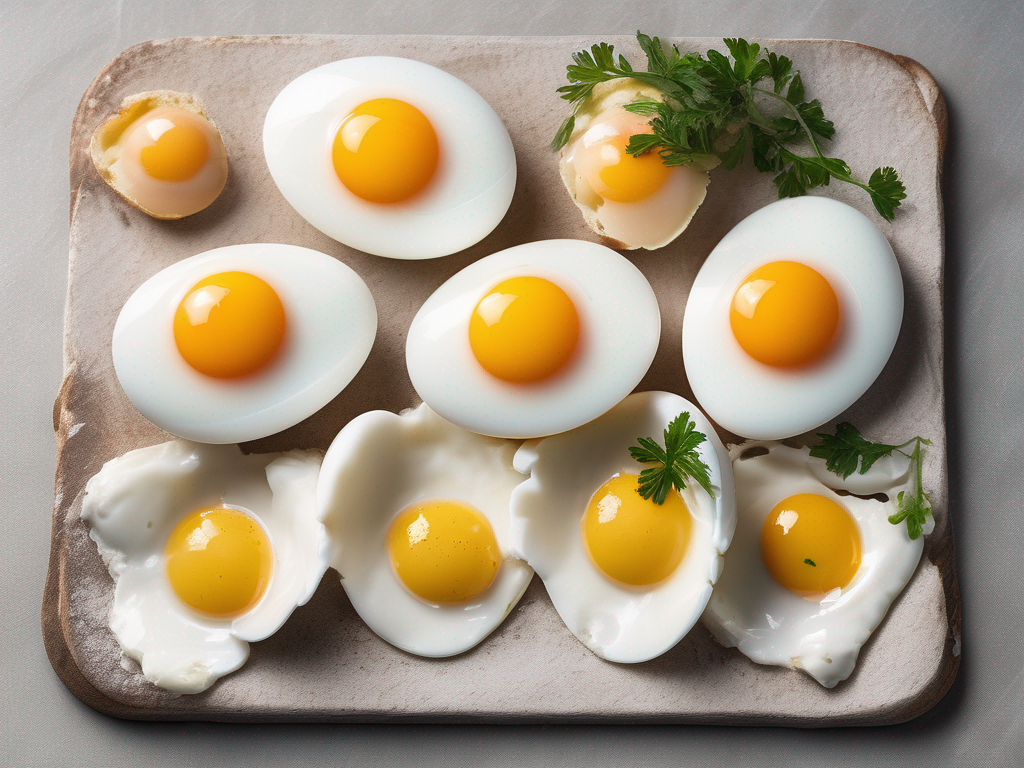
The Best Containers for Storing Leftover Scrambled Eggs
Get Your Free Food Safety Cheat Sheet
30 most common foods with instant answers. Print it and stick it on your fridge—completely free!
The Best Containers for Storing Leftover Scrambled Eggs
Are you a fan of [eggs scrambled](/food/eggs scrambled) for breakfast, but often find yourself with leftovers? Knowing the right container to store your scrambled eggs can make all the difference in preserving their flavor and texture. In this blog post, we will explore the optimal containers for storing leftover scrambled eggs, along with some practical tips to ensure food safety and maximum freshness. (Eggs scrambled)
Why Proper Storage Matters
Storing leftover scrambled eggs properly is essential to prevent foodborne illnesses and maintain the quality of the dish. Improper storage can lead to bacterial growth, off-flavors, and potential health risks. By choosing the right container and following best practices, you can enjoy your leftover scrambled eggs safely and deliciously.
Factors to Consider When Choosing a Container
When selecting a container for storing scrambled eggs, consider the following factors:
- Material: Opt for containers made of food-grade materials that are safe for storing food.
- Air-tightness: Choose containers with tight-fitting lids to prevent air exposure and maintain freshness.
- Size: Use a container that is just the right size to minimize empty space and reduce oxidation.
- Microwave-safe: If you plan to reheat the scrambled eggs, make sure the container is microwave-safe.
Best Containers for Storing Scrambled Eggs
There are several types of containers that are ideal for storing leftover scrambled eggs. Here are some popular options:
1. Glass Containers
- Pros:
- Durable and long-lasting
- Non-porous and non-reactive
- Easy to clean and maintain
- Cons:
- Can be heavy and breakable
Glass containers are a popular choice for storing scrambled eggs due to their non-reactive properties and ability to retain freshness.
2. Plastic Containers
- Pros:
- Lightweight and portable
- Affordable and readily available
- Come in a variety of sizes and shapes
- Cons:
- Prone to scratching and staining
- May absorb odors over time
Plastic containers are convenient for storing scrambled eggs, but make sure to choose BPA-free options to avoid harmful chemicals.
3. Silicone Food Bags
- Pros:
- Flexible and space-saving
- Leak-proof and air-tight
- Environmentally friendly
- Cons:
- Can be difficult to clean
- May retain odors
Silicone food bags are a sustainable choice for storing scrambled eggs and other foods, offering versatility and reusability.
4. Stainless Steel Containers
- Pros:
- Durable and resistant to corrosion
- Lightweight and easy to stack
- Free from harmful chemicals
- Cons:
- More expensive than other options
- Not microwave-safe unless specified
Stainless steel containers are a safe and eco-friendly choice for storing scrambled eggs, providing a secure and non-toxic storage solution.
Tips for Storing Scrambled Eggs Safely
To ensure the longevity and safety of your leftover scrambled eggs, follow these practical tips:
- Cool Quickly: Allow the scrambled eggs to cool to room temperature before refrigerating to prevent bacterial growth.
- Divide into Portions: Separate the scrambled eggs into smaller portions for easier reheating and to minimize waste.
- Label and Date: Use labels to indicate the date of preparation and the contents of the container for easy identification.
- Refrigerate Promptly: Store the scrambled eggs in the refrigerator within two hours of cooking to prevent spoilage.
- Consume Within 3-4 Days: Eat the leftover scrambled eggs within 3-4 days to ensure freshness and safety.
Conclusion
Choosing the right container for storing leftover scrambled eggs is crucial for maintaining their quality and flavor. Glass containers, plastic containers, silicone food bags, and stainless steel containers are all excellent options for preserving scrambled eggs safely. By following proper storage practices and food safety guidelines, you can enjoy your scrambled eggs without compromising taste or risking your health. Make sure to cool, portion, label, refrigerate, and consume your scrambled eggs within a few days to make the most of your delicious leftovers. (Eggs scrambled)
Related Posts
Here are some other articles you might find helpful:
Authoritative Food Safety References
These agencies and university labs inform every tip and health precaution we publish.
USDA FoodKeeper – Cold Storage Guidelines
Official refrigerator, freezer, and pantry timelines maintained by the U.S. Department of Agriculture.
Visit USDA FoodKeeperFDA Produce Safety Rule & Grower Guidance
Field-to-fridge handling practices that prevent contamination of fruits, vegetables, and leafy greens.
Visit FDA Produce SafetyCDC Foodborne Illness Prevention Hub
Surveillance-backed guidance on pathogens, symptoms, and steps to reduce foodborne illness risk.
Visit CDC Food SafetyUC Davis Postharvest Technology Center
University research detailing optimal storage atmospheres for produce after harvest.
Visit UC Davis PostharvestPenn State Extension – Home Food Preservation & Safety
Peer-reviewed extension bulletins on safe canning, chilling, and reheating practices.
Visit Penn State ExtensionGet Your Free Food Safety Cheat Sheet
30 most common foods with instant answers. Print it and stick it on your fridge—completely free! Want more? Upgrade to the complete guide with 70+ foods.
Scan your food directly and get instant safety info using our AI-powered camera feature.